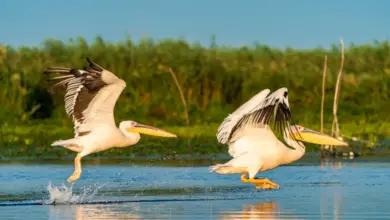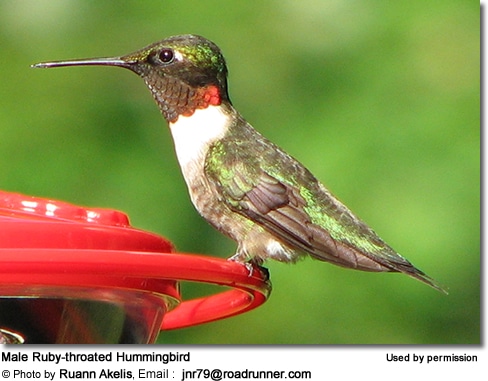Least Tern
The Least Terns (Sternula antillarum, formerly Sterna antillarum) are the smallest of the American Terns. They occur naturally in North America and northern South America.
The Least Tern was formerly considered conspecific (one and the same species) with the Little Tern found in the Old World (Europe / Asia / Africa) – but is now considered a separate (albeit closely related) species.
Other close relatives include the South American Yellow-billed Tern and Peruvian Tern.
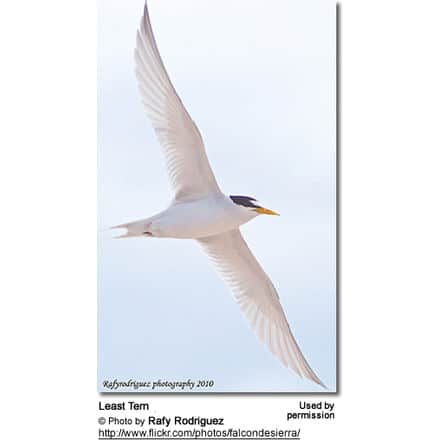
Distribution / Range
The Least Terns are migratory birds.
They breed …
- on the Pacific Coast – from central California, USA to Peru in South America;
- on the Atlantic Coast – from Maine, USA to Argentina, South America;
- around the Great Lakes in Michigan, Minnesota, Wisconsin and Ohio, USA; and
- inland – along the Colorado, Red, Rio Grande, Missouri and Mississippi river systems.
They winter …
- from the Gulf Coast and Central America and the Caribbean, south to Peru and Brazil in northern South America.
They are vagrants to Europe (one record in Great Britain); Ecuador (South America); Grenada (Caribbean Sea); Saint Pierre and Miquelon (French islands in the North Atlantic Ocean, south of the Canadian province of Newfoundland and Labrador)
Countries they are native to:
North America
Canada; United States (Arkansas, Colorado, Illinois, Indiana, Iowa, Kansas, Kentucky, Louisiana, Mississippi, Missouri, Montana, Nebraska, New Mexico, North Dakota, Oklahoma, South Dakota, Tennessee, Texas
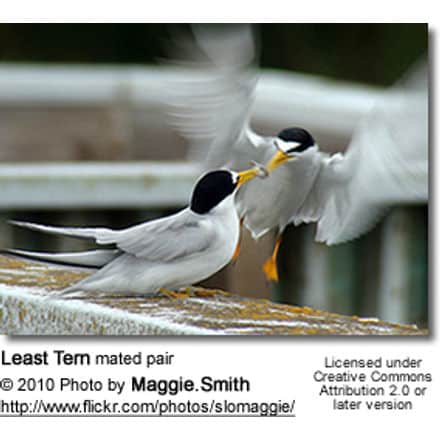
Central America
Costa Rica; El Salvador; Guatemala; Mexico; Panama;
Caribbean:
Anguilla; Antigua and Barbuda; Aruba; Bahamas; Barbados; Belize; British Virgin Islands, Cayman Islands; Cuba; Dominica; Dominican Republic; Guadeloupe; Haiti; Honduras; Jamaica; Martinique; Montserrat; Netherlands Antilles; Puerto Rico; Saint Kitts and Nevis; Saint Lucia; Saint Vincent and the Grenadines; Trinidad and Tobago; Turks and Caicos Islands; U.S. Virgin Islands;
South America
Argentina; Brazil; Colombia; French Guiana; Guyana; Peru; Suriname; Venezuela.
Preferred Habitat:
Least Terns favor open habitat; they are typically found along any bodies of water, including sea coasts, shell and gravel beaches, islands, bays, unobstructed river channels, lakes, lagoons, estuaries and salt flats associated with rivers and reservoirs.
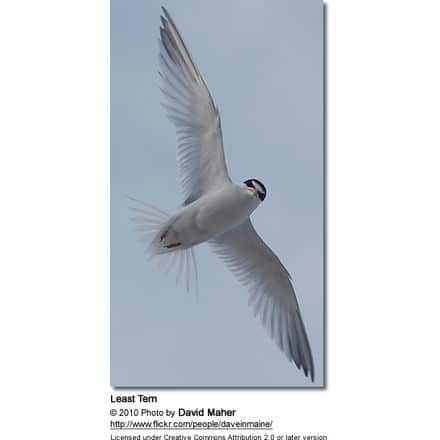
Recognized Subspecies and Ranges
The three subspecies look identical and are segregated on the basis of their separate ranges.
-
- Eastern or Coastal Least Tern (Sternula antillarum antillarum – Lesson, 1847) – Nominate Race
- Estimated population of ~21,500 pairs.In North America, they summer along the Atlantic coast from Maine to Florida and west along the Gulf coast to south Texas (including lower Rio Grande Valley). They also breed in Bermuda, the Caribbean, Honduras and northern Venezuela. They winter south to northern Brazil in South America.
- California Least Tern (Sternula antillarum browni – Mearns, 1916)
- Estimated population of ~ 4,500 pairsThey summer along the Pacific coast of North America – from central California (San Francisco Bay) to southern Baja California and western Mexico. They mostly winter in Central America.
- Interior Least Tern(Sternula antillarum athalassos – Burleigh and Lowery, 1942)
- Estimated population of ~ 7,000 pairs.Breed along the inland river systems in the United States, where they occur in the following states: Montana, Wyoming, eastern Colorado, New Mexico, Oklahoma, southern Kansas, Mississippi, Arkansas, Missouri, northern Louisiana, southern Indiana and Ohio. They winter south to northern Brazil.
- Eastern or Coastal Least Tern (Sternula antillarum antillarum – Lesson, 1847) – Nominate Race
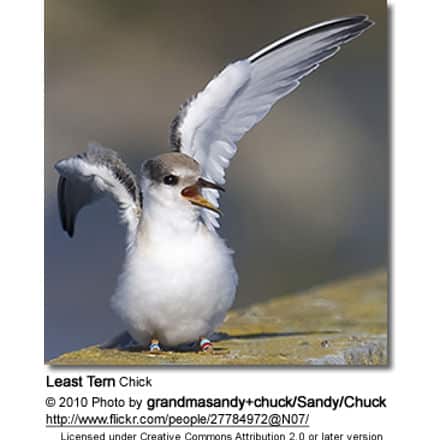
Description
Least Terns are the smallest member of the gull and tern family. They measure 8.3 – 9.4 inches (21 – 24 cm) in length (including tail). The wingspan is about 18.9 – 20.9 inches (48 – 53 cm). They weigh from 30 – 52 g (1.1 – 1.8 oz).
The adult plumage is mostly pale grey (back and wings) and white (plumage below), with black markings on the head. There is a black leading edge along the edges of the wings.
During the breeding seasons, these black markings end at the white forehead. In the winter (non-breeding season), the white forehead is more extensive and the black “cap” is smaller and less sharply defined.
The tail is forked and the narrow wings are pointed.
In the summer, the bill is yellow with a blackish/brownish tip. In winter, the bill is all blackish. The legs are yellowish to orange.
Males and females look alike.
Juveniles
Hatchlings are about 1.5 inches (40 mm) long (about the size of a Ping-Pong ball). Their down is yellow and buff with brown spots.
Juveniles resemble the winter adult, with a greyish-brown and buff-colored plumage. The head is white initially and over time, they attain less distinctive black markings on the head. They have dark bills and eye stripes. There are U-shaped marks across the back. Their tail is less pointed than that of the adult.
Immature birds attain adult plumage when they are about one year old (after their first molt). They reach reproductive maturity when they are 2 to 3 years old.
Similar species
They look similar to the Little Tern, but their rumps and tails are white. Plus they have a more squeaky call.
They have a paler grey upper plumage than the Yellow-billed Tern and, during the summer season, can also be differentiated by the black-tipped bill.
They also have a paler grey upper plumage than the Peruvian Tern and can be differentiated by the white under plumage – which is pale grey in the Peruvian Tern. Also has a shorter black tip to the bill.
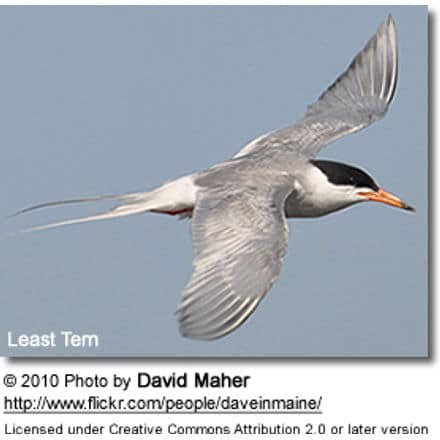
Feeding and roosting characteristics
Where they feed …
Least Terns seek out shallow water areas of estuaries, bays, lagoons, lakes, ponds, streams and rivers with an abundance of smaller fish. During the breeding (summer) season, they usually forage close to their nesting areas. They may feed near the shore in the open ocean – particularly near lagoons or bay mouths.
What they eat …
They primarily eat small fish, such as smelt, anchovy, silversides (ray-finned fish) and surfperch. They often favor fish of a certain size.
They may also eat small crustaceans (i.e., crabs, shrimp, krill and barnacles) and some invertebrates (i.e., insects).
How they eat …
They hover and dive into the water for small fish and aquatic crustaceans. They occasionally skim the water surface for insects.

Nesting and breeding behavior
The Least Terns mostly breed between April and August. They usually remain in their breeding territory for 3 to 5 months. During the first 2 – 3 weeks on the breeding grounds, they are engaged in noisy courtship displays, mate selection, pair-bond strengthening activities, and, finally, nest site selection.
They usually return to the same breeding site, or one close by, year after year.
Least Terns are colony nesters. They usually nest 10 – 30+ feet (3 – 9 +meters) apart from each other.
The courtship display consists of a variety of postures and vocalizations, an aerial display that ends in a fish transfer on the ground between the male and the female. This courtship dance usually occurs on an exposed tidal flat or beach away from the nesting colony site.
They usually breed on bare or sparsely vegetated sand, on open shell or gravel beaches, open shoreline areas, sandbars, islands, and salt flats associated with rivers and reservoirs. They usually avoid thick vegetation and narrow beaches, favoring open habitats.
These ground nesters usually nest at higher elevations, away from the water’s edge. In cases where natural nest sites are not readily available, they have nested on manmade sites, such as ash disposal areas of power plants, sand and gravel pits, reservoir shorelines, and flat rooftops. For example, about 20 pairs have been returning to Pensacola, Florida since 1957 to nest on the roof of a city auditorium. In the San Francisco Bay region, they usually nest on abandoned salt flats.
The average clutch consists of 2 to 3 eggs, but occasionally one or 4 eggs are laid. The eggs are olive buff in color, speckled or streaked with dark publish-brown, brown or blue-grey markings. Both parents share the incubation of the eggs which lasts about 20 – 22 days.
The average clutch consists of 2 to 3 eggs, but occasionally one or 4 eggs are laid. The eggs are olive buff in color, speckled or spreaked with dark publish-brown, brown or blue-grey markings. Both parents share the incubation of the eggs which lasts about 20 – 22 days.
The chicks hatch within one day of each other. Their eyes are open and they are covered down. They are able to walk, but remain in the nest for another week, at which time they wander away, seeking shade and shelter in vegetation, rubble, or structures. They are able to fly within 3 weeks but continue to be cared for by the parents until the fall migration.
Chicks are capable of flight within 3 to 4 weeks, but the parents continue to feed them until fall migration.
The parents and terns within a colony will defend the nesting territory against intruders, such as Burrowing Owls, American Kestrels, Great Blue Herons, Mississippi Kites, coyotes, bobcats, domestic cats, and dogs. When alarmed, these terns will fly into the air, giving an alarm call, and then diving repeatedly at the intruder.
Least Terns will produce second clutches if eggs or young are lost early on in the season.
Calls / Vocalizations
The Least Tern’s call is described as a high pitched “kit,””zeep” or “zreep.”
Global Names
Chinese: ????? … Czech: rybák nejmenší … Danish: Lille Terne … Dutch: Amerikaanse Dwergstern … German: Amerikanische Zwergseeschwalbe … Finnish: amerikanpikkutiira … French: Petite Sterne … Icelandic: Rindilþerna … Italian: Fraticello americano … Japanese: amerikakoajisashi … Norwegian: Amerikadvergterne … Polish: rybitwa mala … Portuguese: Trinta-réis-miudo … Slovak: rybár krpatý … Spanish: Charrancito Americano … Swedish: Amerikansk småtärna


